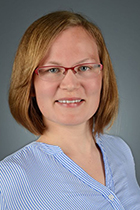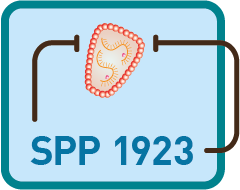Innate sensing and cellular restriction factors targeting endogenous retroviruses and HIV‑1

Project Member

Prof. Dr. Norbert Bannert
Project Leader
Prof. Dr. Norbert Bannert
Phone: +49 30 18754 – 2549
Fax: +49 30 18754 – 2334
BannertN@rki.de
Head of Division for HIV
and other Retroviruses
Robert Koch Institute
Nordufer 20
13353 Berlin
Germany

Dr. Oya Cingöz
Division for HIV and other Retroviruses
Robert Koch Institute
Nordufer 20
13353 Berlin
Germany

Adriana Block,
PhD Student

Nicolas Arnow,
PhD Student
Project Summary
Cells are confronted with new infections by exogenous retroviruses as well as with expression of endogenous retroviruses residing in their own genomes. There are cellular countermeasures in place that function to protect the host against such pathogens; in particular the multiple innate immune signaling pathways that recognize and respond to various molecular patterns associated with these viruses. In case of Human Endogenous Retroviruses (HERV), such responses have been associated with autoimmune diseases and protection from cancers. In case of HIV‑1 infection, chronic immune activation is one of the hallmarks of a detrimental cycle consisting of viral replication and prolonged inflammation, ultimately resulting in the loss of functional immune cells.
Whether endogenous and exogenous retroviruses are subject to innate immune sensing in infected cells, and if so, when and where this response occurs remains a topic of discussion. Thus far, every possible step of the retroviral replication cycle has been proposed to stimulate innate immune responses. We and others discovered that infection of human monocyte-derived macrophages with HIV‑1 or HIV‑2 results in strong stimulation of innate immune activation in the presence, but not in the absence of Vpx. The antiretroviral gene products and sensing pathways acting against endogenous retroviruses like HERVs remain largely unknown. We investigate the viral and cellular determinants of innate immune induction against HIV‑1 and HERVs, as well as cellular restrictions preventing HERV proliferation. Implications of the sensing response to cells of the innate immune system is another focus of the project.
Fig. 1: Thin section electron microscopy of reconstituted HERVK(HML2) particles
(Chudak et al. Retrovirology, 2013).
Fig. 2: Innate immune recognition of HIV‑1 (Iwasaki A., Immunity, 2012).



